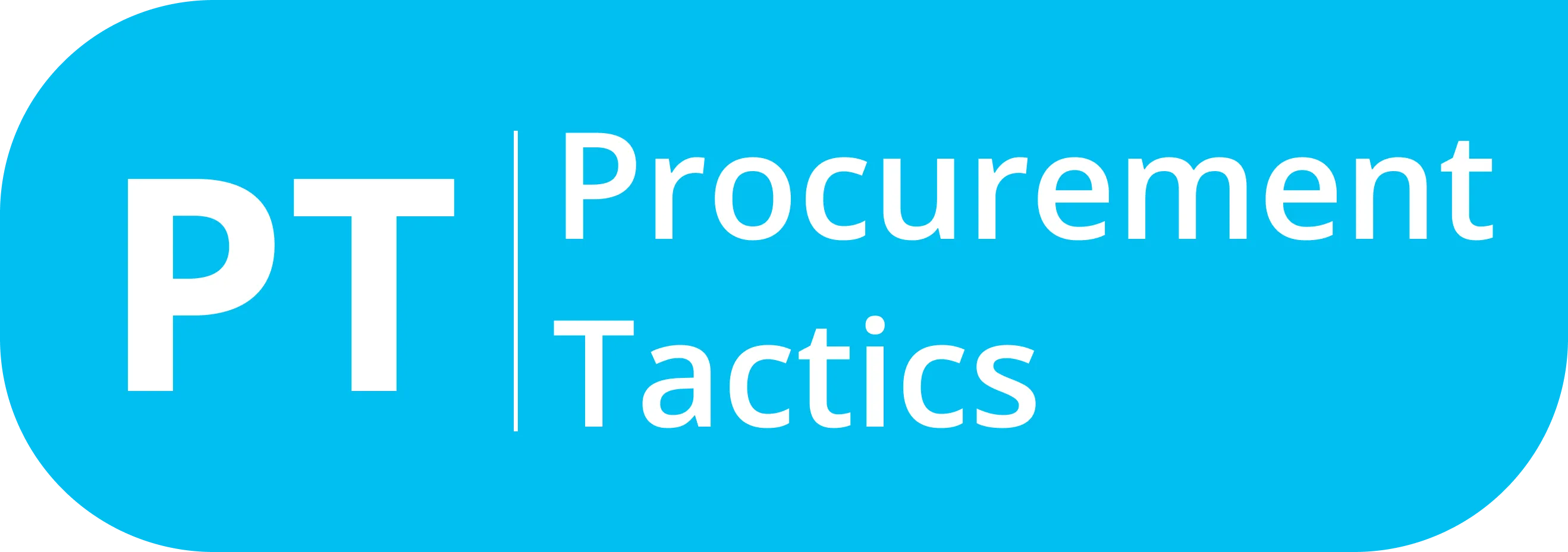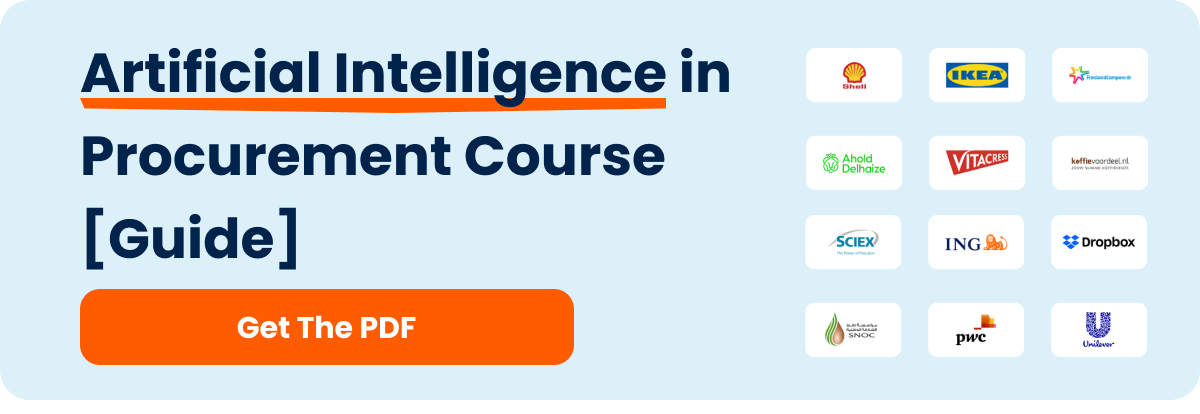Written by Marijn Overvest | Reviewed by Sjoerd Goedhart | Fact Checked by Ruud Emonds | Our editorial policy
AI Agent Business Canvas for Procurement
With AI agents coming to procurement, we decided to create a course full of tutorials to show how it’s done (waitlist).
But then something happened…
While creating this course, I realized this:
Creating the AI agents isn’t the biggest problem. It’s getting the right approval to launch them.
Procurement leaders have heard the AI pitch before. They’ve seen the hype. And they’re asking: Why this, why now, and what’s the return?
That’s where a clear, numbers-first business case changes the game. The right framing can turn your AI agent from “interesting” to “let’s start today.”
1. Building the AI business case
What’s the fastest way to kill a great idea? By failing to show why it matters to the people who decide the budget.
And let’s be honest. A lot of procurement leaders have heard the AI pitch before. They’ve seen the hype, and they’re wondering if this is just another shiny object. That’s why your business case has to prove value with facts, not promises.
Imagine your team spends hours every week chasing missing information. You build an AI agent that does it automatically. That’s nice. But to get approval, you need to translate “this is clever” into something concrete, like:
- 8 hours saved each week
- €12,000 saved per year
- 25% faster cycle time
- Zero missed deadlines in the last quarter
These numbers make it real.
Grab a notepad and jot down three things:
- The pain point your AI agent solves.
- A measurable benefit. This could be time saved, errors reduced, speed improved, cost avoided, or compliance improved.
- Any risks. And how you’ll control them.
2. AI Agent Business Case
Here’s a simple one-page template you can adapt:

- Problem: [What’s broken or slow today?]
- Proposed Solution: [One-line description of your agent]
- Expected Benefit: [Hours saved, cost avoided, cycle time reduced, compliance improved]
- Estimated ROI: [Rough € or % impact]
- Risks & Controls: [Privacy, accuracy, approvals]
- Next Step: [Pilot, test group, or full rollout]
In Procurement, the business case often comes down to speed, risk avoidance, and cost protection. Leaders want fewer missed deadlines, better supplier responsiveness, and cleaner compliance trails.
Picture this. Buyers manually check contract expiry dates once a month. It’s easy to miss one — and that can cost thousands in auto-renewals. An AI agent flags expiring contracts 90 days ahead, sends the first draft of a renewal email, and updates your tracker automatically. Short-term win: no last-minute scrambles. Long-term win: you avoid renewal penalties, keep negotiation leverage, and improve on-time renewal rates.
Think of one procurement task that happens at least monthly, has a clear trigger like a date or file update, and carries a real cost if it’s late. Then fill in the template.
For example: “Supplier follow-up agent” → Saves 3 hours/week, increases supplier response rate by 20%, prevents stalled RFPs, avoids €15K in delayed project costs, ROI in 1 month.
3. My Take: If You’re Not Asking These Yet, You’re Behind
From my observations, the business cases that get approved have three things in common:
- They lead with numbers, not tech jargon. Time saved, cost avoided, and risk reduced are what resonate.
- They address the “so what” question. If a leader doesn’t see why it matters this quarter, they’ll pass.
- They manage risk upfront. If you consider this something ‘a thing you’ll deal with later’, you can be sure your agent is dismissed.
So, pick one task in your work today and write a short business case for it using the template. Keep it to one page. Add one strong number that shows value, one line on how you’ll manage risk, and the next step to test it.
But here’s the thing: even the strongest business case won’t land if your team can’t actually deliver on it. That’s why hiring for AI readiness is just as important as proving ROI. If your people don’t know how to use AI in real procurement scenarios, your project stalls before it starts.
To help with that, I’ve put together a free guide: 25 AI Interview Questions for Procurement Hires.
It’s built to help you assess whether candidates can apply AI to speed up research, improve supplier analysis, and make better decisions, and not just talk about it.
Because in procurement, measuring ROI gets your AI project approved, but having the right people makes sure it actually works.
4. Ask the Community: Is everyone in your procurement team on the same AI-level?
My team and I speak with +- 100 procurement directors per month when we do a demo tour of our platform.
At this point, I know the word ‘artificial intelligence’ will come up in the conversation at some point.
Here is the pattern I noticed:
In every procurement team, there are a few experimenting with AI. But definitely not everybody. There is a huge skill gap amongst team members.
Do you recognize this? If so, our program ‘AI Fundamentals for Procurement Teams’ might be relevant for you. It’s a 21-day program meant to get everyone in your team on the same level when it comes to using AI in your team.

PS: We expect the AI agent course to be finalized this autumn. You can join the waitlist if you want to be notified when it launches.
About the author
My name is Marijn Overvest, I’m the founder of Procurement Tactics. I have a deep passion for procurement, and I’ve upskilled over 200 procurement teams from all over the world. When I’m not working, I love running and cycling.








